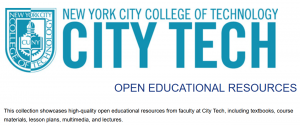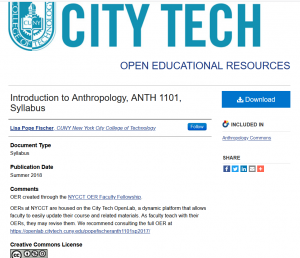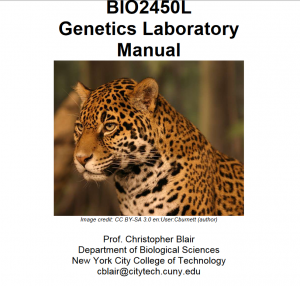New and Noteworthy is the City Tech Library OER Team’s weekly roundup of new and noteworthy OER. We try to include at least one OER relevant to each school at City Tech in every post. At the end of the month, these resources will be compiled and distributed by the library liaison for your department. Please contact us if you know of new or particularly interesting OER to share with our colleagues or would like more information about OER initiatives at City Tech.
Arts & Sciences
- The Bright Continent: African Art History, by Kathy Curnow, Cleveland State University (2018). License: CC BY-NC-SA
“This book aims to act as your map through the world of African art. As such, it will help you define the competencies you need to develop–visual analysis, research, noting what information is critical, asking questions, and writing down your observations–and provide opportunities for you to practice these skills until you are proficient. It will also expose you to new art forms and the worlds that produced them, enriching your understanding and appreciation.” - Intercultural Communication, by Shannon Ahrndt, University of Missouri-St. Louis (2020). License: CC BY-NC-SA
“Intercultural Communication examines culture as a variable in interpersonal and collective communication. It explores the opportunities and problems arising from similarities and differences in communication patterns, processes, and codes among various cultural groups. It explores cultural universals, social categorization, stereotyping and discrimination, with a focus on topics including race, ethnicity, social class, religion, gender and sexuality as they relate to communication.”
Professional Studies
- Communication, Affect, & Learning in the Classroom – 4th Edition, by Virginia Peck Richmond, Jason S. Wrench, and Joan Gorham, Jason S. Wrench (2020). License: CC BY-NC-SA
“The purpose of the handbook was to synthesize the first three decades of research in instructional communication into a single volume that could help both researchers and instructors understand the value of communication in the instructional process.” - Plague Diaries: Firsthand Accounts of Epidemics, 430 B.C. to A.D. 1918, by Ryan Johnson, David Ulrich and Tina Ulrich (2020). License: CC BY-SA
“This is a small collection of public domain excerpts from first hand accounts of epidemics throughout history.”
Technology & Design
- Structural Mechanics, by Tomasz Wierzbicki, MIT Open Courseworks (2020). License: CC BY-NC-SA
“This text covers the fundamental concepts of structural mechanics with applications to marine, civil, and mechanical structures. Topics include analysis of small deflections of beams, moderately large deflections of beams, columns, cables, and shafts; elastic and plastic buckling of columns, thin walled sections and plates; exact and approximate methods; energy methods; principle of virtual work; introduction to failure analysis of structures. We will include examples from civil, mechanical, offshore, and ship structures such as the collision and grounding of ships.” - B C, Before Computers: On Information Technology from Writing to the Age of Digital Data, by Stephen Robertson, Open Book Publishers (2020). License: CC BY
“The idea that the digital age has revolutionized our day-to-day experience of the world is nothing new, and has been amply recognized by cultural historians. In contrast, Stephen Robertson’s BC: Before Computers is a work which questions the idea that the mid-twentieth century saw a single moment of rupture. It is about all the things that we had to learn, invent, and understand – all the ways we had to evolve our thinking – before we could enter the information technology revolution of the second half of the twentieth century. Its focus ranges from the beginnings of data processing, right back to such originary forms of human technology as the development of writing systems, gathering a whole history of revolutionary moments in the development of information technologies into a single, although not linear narrative.”
Cailean Cooney, Assistant Professor, OER Librarian: ccooney@citytech.cuny.edu
Joshua Peach, Adjunct Reference & OER Librarian: jpeach@citytech.cuny.edu
Joanna Thompson, Adjunct OER Librarian: jthompson@citytech.cuny.edu






